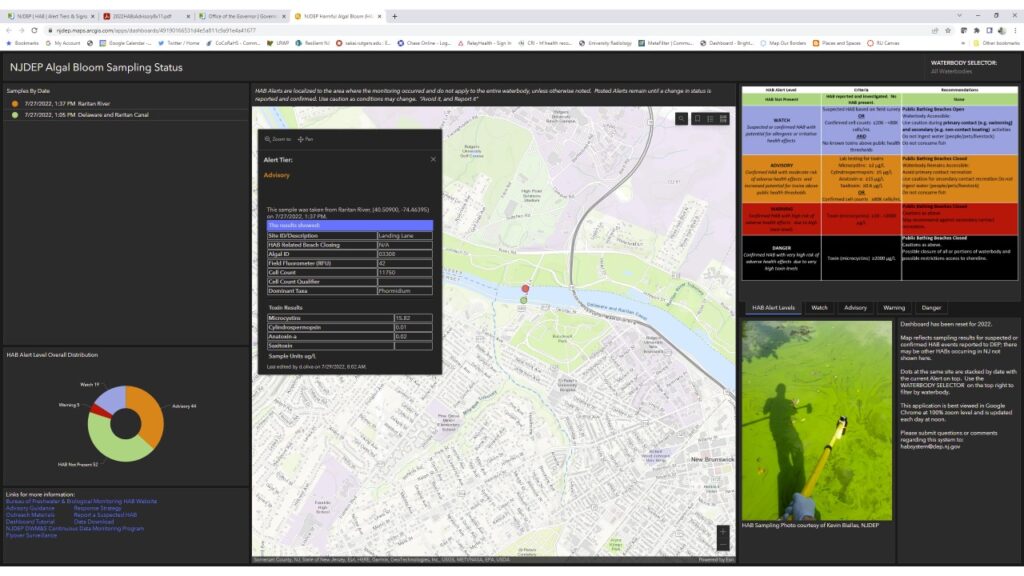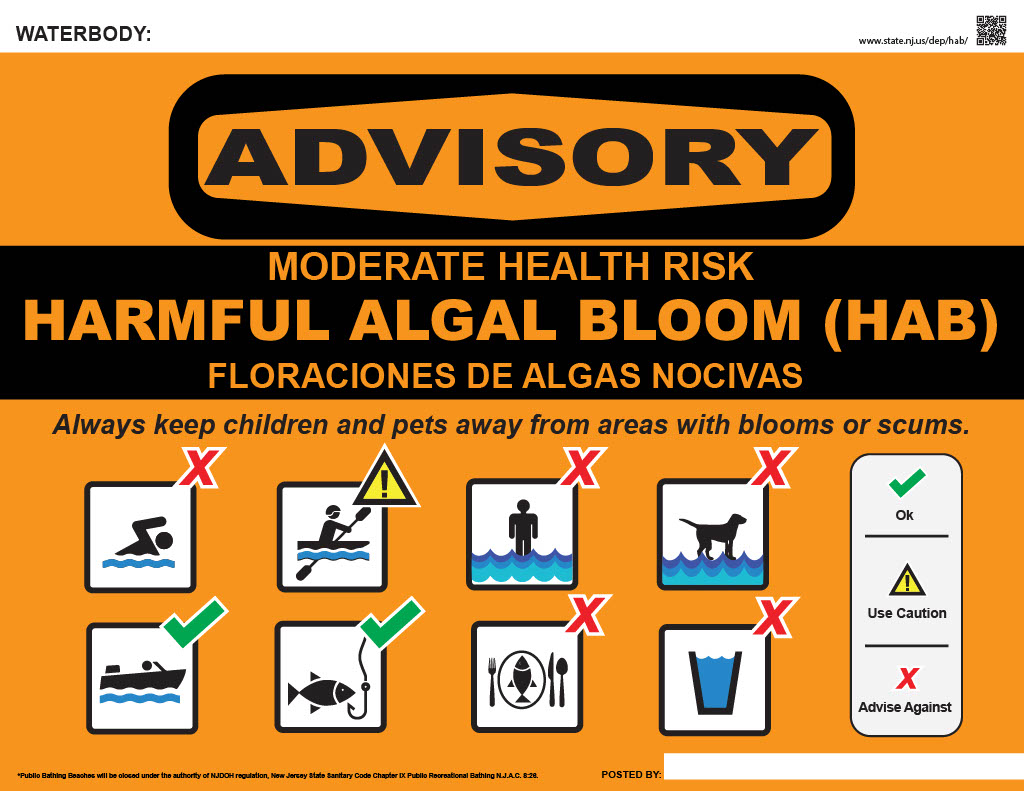Harmful Algal Blooms on the Raritan
New Jersey Department of Environmental Protection (NJDEP) sampling conducted at Landing Lane Bridge along the Raritan River on July 27, 2022 indicates MODERATE HEALTH RISKS associated with the presence of harmful algal bloom (HAB) in the water.
The water body advisory for presence of HAB microcystins warns against primary contact (swimming or wading or directly touching the water) for both humans and pets, and against drinking the water or consumption of fish caught in the water. Harmful algal blooms could lead to serious health risks. If you or your pet have had primary contact with the water, please wash with fresh water immediately.
Testing of the water late in July found dangerous levels of microcystins, a class of toxins produced by certain freshwater cyanobacteria, commonly known as blue-green algae. According to the DEP, these microorganisms could pose a high risk of health effects, including abdominal pain, headache, sore throat, vomiting and nausea, dry cough, diarrhea, blistering around the mouth, pneumonia and liver toxicity.
Children and pets are particularly vulnerable because they ingest more water in relation to their weight.
More information is available on the searchable NJDEP website:
https://njdep.maps.arcgis.com/apps/dashboards/49190166531d4e5a811c9a91e4a41677

The Lower Raritan Watershed Partnership is keeping an eye on things, and will post notices at locations with observable HABS or at locations indicated as problematic by NJDEP.

How can you reduce the risk of dog poisoning by cyanobacterial toxins?
• If possible, keep your dog on a leash near shorelines.
• Don’t let dogs wade, drink the water or eat/walk in beach debris.
• If your dog goes in the water please remove them immediately.
• Don’t let them lick their fur or paws after getting out of the water.
• Rinse/wash them thoroughly with fresh water from a safe source if available. (i.e. bottled water or household garden hose). Otherwise a towel or rag can be used to remove algal debris.
• Use rubber gloves during pet cleaning, if possible.
• Dry them thoroughly with a clean towel or rag.
• Wash your hands with fresh water.
• Please notify the public health department or state natural resource management agency if you observe a suspected HAB.
